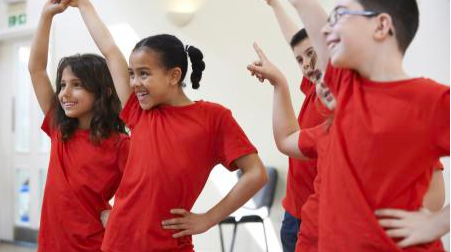Teaching Dance: The Basics

Previously published in Volume 82, Issue 2
In my work I meet a lot of new teachers. Some of them are still enrolled in university and are completing their practice teaching, while others are in their first frantic years, trying to establish themselves in a career that is more uncertain than ever.
They are a diverse group of individuals — some young men and women, some less young and pursuing teaching as a second career— always enthusiastic and idealistic as they take their first steps into the classroom. One of the few things that unites them is that they approach teaching dance with uncertainty and often with fear, as it is generally a subject area for which they’ve received no training.
Undervalued, despite recognition
Bachelor of Education programs that employ professors with PhDs in literacy, music, visual arts and theatre, typically wind up passing dance off to whichever professor is unlucky enough to choose the short straw. Sometimes it’s the professor of physical education, sometimes it’s the professor of music, and sometimes it isn’t taught at all. Some of these professors have a comprehensive understanding of dance that they’ve worked hard to obtain outside of their graduate work, but many do not. I meet teachers all the time who have either had no dance education in their B.Ed. program or whose experience boils down to a few folk dances or a tiny bit of Dalcroze, and now they find themselves in the unlucky position of having to teach, assess and report on a subject they literally know nothing about!
As a curriculum consultant, this is frustrating because it means that instead of working with teachers to refine their practice, I have to teach them how to read the curriculum document, what a leap is, and what the difference is between locomotor and non-locomotor movement.
As a dance educator with a graduate degree in dance education, it’s maddening. We in dance education know that our work is often undervalued but to find ourselves still fighting for teachers to be adequately trained, even after receiving recognition in most provincial curricula, is bewildering. Is there any other subject area for which classroom teachers are responsible that they receive no training to teach? Is there another subject in the curriculum that is taught, in B.Ed. programs, by people with no academic background in that subject?
Four dance basics to learn right away
So here’s my wish list for you, new teachers, as you step across that classroom threshold. This is what I’d love for you to already know about dance before I come visit you.
1. Dance is a language.
Dance is not a series of steps, it isn’t a complicated sequence and it doesn’t require special shoes or clothes. Dance is a non-verbal language of expression. It’s a way of telling a story, of explaining your thinking, of showing your knowledge, and of sharing your experiences and feelings with the world. It’s what you knew how to do when you were three years old. You can remember and you won’t need pink shoes or tights to do that.
2. Physical literacy is key to being successful.
All of the movement skills that you need to be successful in sports or fitness are the same movement skills you’ll need to be successful teaching dance. Can you jump? Shift your weight? Change levels? Balance on a variety of body bases including your feet, knees and seat? Spin? You don’t have to be an amazing dancer to teach dance successfully in the classroom but you will find it much easier if you have enough physical literacy and fitness to move with confidence.
3. The elements of dance
If every teacher came into the classroom with a basic understanding of the elements of dance, approaching the curriculum expectations would be a much easier task. Body, space, energy, time and relationships: these are the tools we use to build dances. Most elementary curricula are based, at least in part, on the work of Rudolf Laban so knowing even a little about his theoretical framework for movement analysis is a great first step towards dance literacy.
4. Dance is a powerful teaching tool for many other subjects
The teaching of mathematics, science, social studies and language can all be enriched and improved by using movement and dance. We know that children are spending too much time sitting during the school day. Get them to dance your lesson on symmetry or sedimentary rock and I promise you they’ll remember the concepts!
That’s it: a four-item list. In Ontario (and in other jurisdictions in Canada), teachers are now spending two years working on their B.Ed. Surely faculties can find the time during those years to give teachers enough dance education, from someone who knows their subject, so that they are well prepared to both teach and assess dance as a stand-alone subject and to use dance as a teaching tool in their classrooms.
If I danced it for you, would you be convinced?








